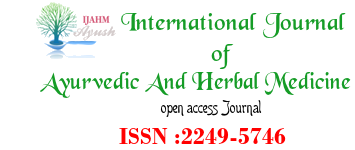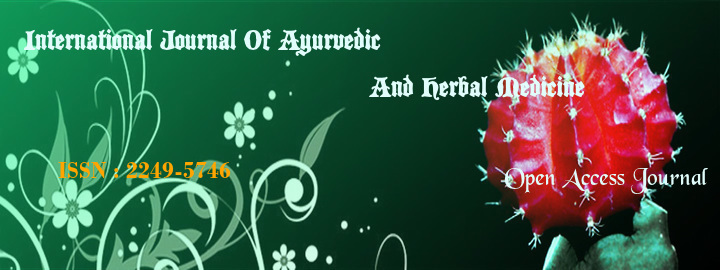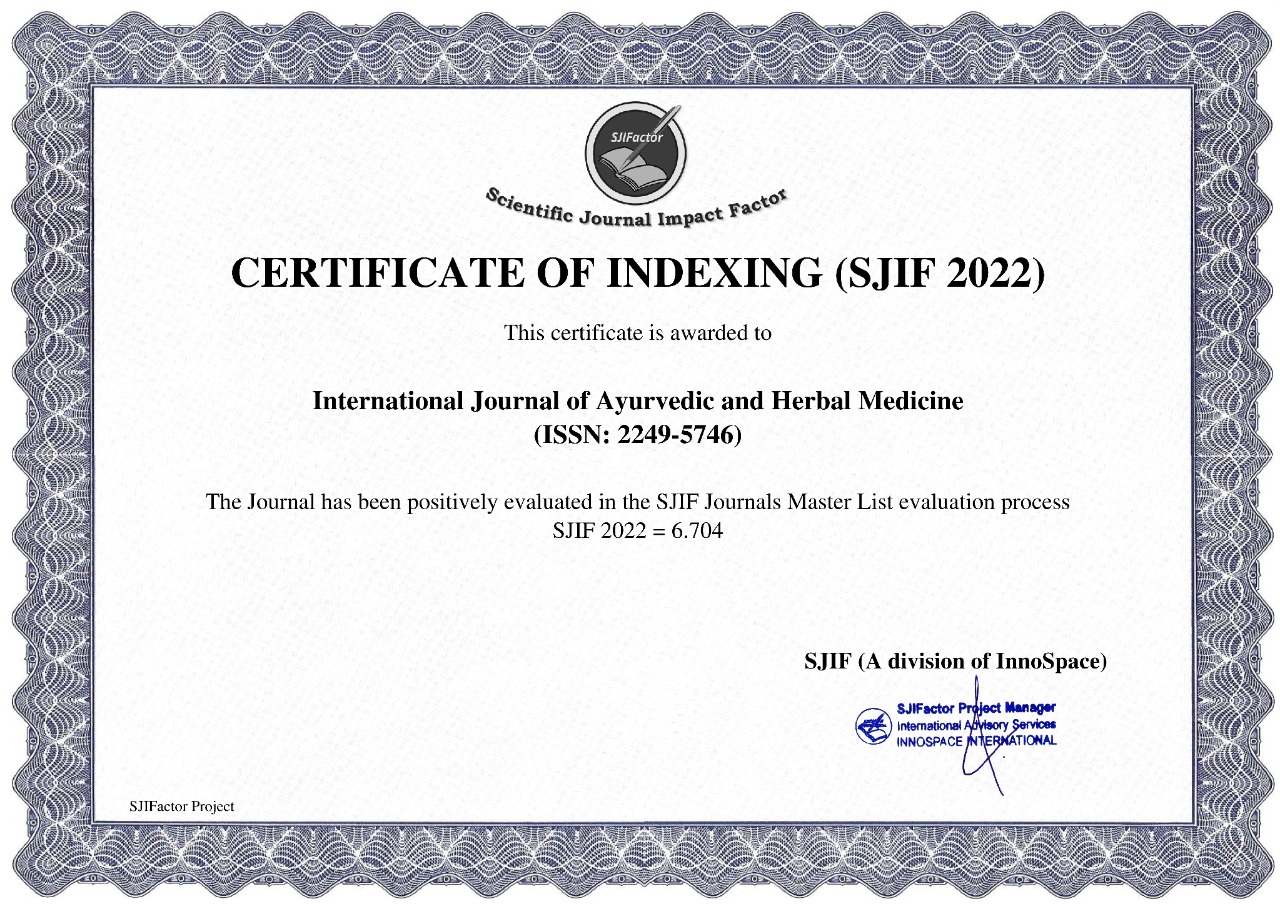


1P.Sailaja Rao , 2Mehnoor Farheen , 3Prakash V Diwan
1Associate Professor, Sri Venkateshwara College of Pharmacy, Hyderabad-81, Telangana State, India
2 Assistant Professor, Shadan Women’s college of Pharmacy, Hyderabad-81, Telangana State, India
3 Professor, Maratha Mandal’s Central Research Laboratory, Belgaum-590 006, Karnataka, India.
*Address for Correspondance: SriVenkateshwara College of Pharmacy, Madhapur, Hyderabad-81.
ABSTRACT:
The present study was aimed to evaluate the anti-hyperglycemic activity and in vivo anti-oxidant effect of ethyl acetate extract of Actinopteris dichotoma.It is commonly known as peacock’s tail which belongs to the family Pteridaceae. Ethyl acetate extract of whole plant of Actinopteris dichotoma (EAAD) was prepared by Soxhlet extraction. Wistar rats weighing (180-200 gms) were divided into 6 groups (n=6), and three doses (100 mg/kg, 200 mg/kg and 400 mg/kg) of extract were selected. Insulin was used as a standard drug. Diabetes was induced by alloxan (120mg/kg, i.p) in control group. The animals were pre-treated with the extracts at specified doses for a period of 14 days.On 21stday, the blood glucose levels along with anti-oxidant enzymes like Superoxide dismutase (SOD), Catalase (CAT) and lipid peroxidase (LPO) were also determined in all animals. Histopathological studies were also performed to observe the effect of test drug on pancreas.The EEAD at 200 mg/kg body weight showed a significant reduction in blood glucose levels (p<0.001) with the value of 150.6 mg/dl on 21st day as compared to the diabetic control. Also, the extract showed significant improvement in SOD and CAT with 35.61 and 40.56 U/mg of protein. Histopatho study of pancreatic tissue exhibited normal exocrine structure with less hemorrhage or damage in endocrine portion.These results suggest that ethyl acetate extracts of Actiniopteris dichotoma Bedd at the dose of 200 mg/kg showed anti-hyperglycemic effect with a substantial evidence of increased pancreatic cell viability as compared to the diabetic control.
KEYWORDS: Ethyl acetate, Alloxan, Blood glucose, Actinopteris dichotoma, Pancreas.
REFERENCES
1. World Health Organization. Global Report on Diabetes. Diabetes Mellitus – epidemiology, prevention and control, Diabetes and Gestational. Geneva; 2016.
2. Jyothi S G, Chavan S C S, Somashekaraiah B V. In vitro and in vivo antioxidant and anti-diabetic efficacy of Cassia auriculata L. Flowers. Global Journal of Pharmacology. 2012; 6:33-40.
3. Naviaux R K. Oxidative Shielding or Oxidative Stress? J Pharmacol Exp Ther. 2012; 342 (3): 608-618.
4. Rochette L, Zeller M, Cottin Y, Vergely C. Diabetes, oxidative stress and therapeutic strategies. Biochimica et Biophysica Acta – General Subjects. 2014; 9: 2709-2729.
5. Walvekar M V, Potphode N D, Desai S S, Deshmukh V M. Histological Studies on Islets of Langerhans of Pancreas in Diabetic Mice after curcumin Administration. 2016; 8(9): 1314-1318.
6. Amos Babu J, Kiran G, Sudhakar babu A M S, Venkateshwar Rao P. Anti-diabetic activity of Actinopterisdichotoma (Kuhn) leaves extracts in alloxan induced diabetic rats. International Journal of Phytopharmacology. 2012; 3(3): 308-317.
7. OECD guidelines for testing of chemicals. Acute Oral Toxicity-Acute Toxic Class Method 423.2001: 1-14.
8. Bhattacharya, Das. Anti-diabetic activity of Lagenariasiceraria pulp and seed extract in normal and alloxan-induced diabetic rats. International Journal of Pharmaceutical sciences and Research. 2012; 3(9): 3362-3369.
9. Parthiban P, Ravikumar J A, Anjana A. Anti-diabetic activity of Kovaikizhangu chooranam in alloxan induced diabetic rats. International Journal of Life Science & Pharma Research. 2012; 2(4): 68-72.
10. Hagino H, Shiik Y K, Mastuba H. Enzyme linked immunosorbent assay method for human autophosphorylated insulin receptor: Applicability to insulin-resistant states. Diabetes. 1994; 43: 274-80.
11. Okhawa H, Ohishi N, Yagi K. Assay for lipid peroxides in animal tissue by Thiobarbituric acid reaction. AnnalBiochem. 1979; 95: 351.
12. Aebi H. Catalase. In Bergmeyer Hu (ed) Methods in enzymatic analysis. Academic press: New York. 1983; 276-286.
13. Rupesh kumar M, Kavitha K, Haldar PK.: Hypoglycemic effect of Andrographisechioides on streptozotocin induced experimental rats. J App Pharm 2015; 7: 60-68.
14. Loizzo M R, Rashed K, Said A, Bonesi M, Menichini F, Tundis R. Anti-proliferative and antioxidant properties of AlhagimaurorumBoiss (Leguminosae) aerial parts. Industrial Crops and Products. 2014; 53: 289-295.
index























